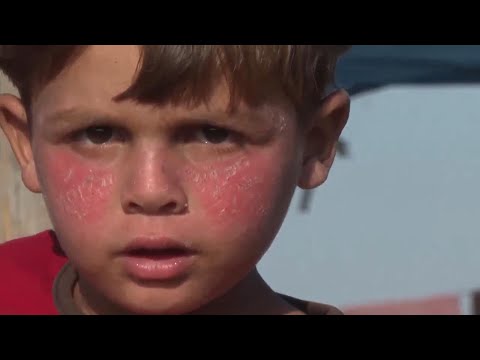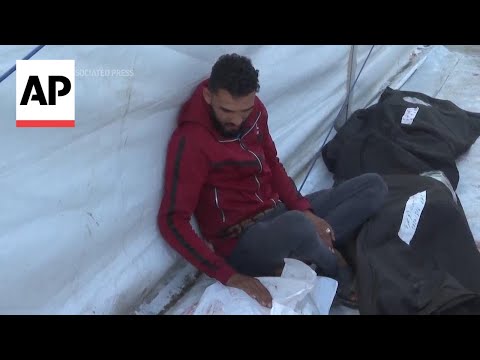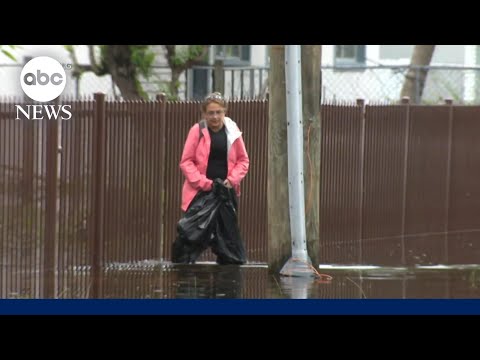(24 Jun 2024)
RESTRICTION SUMMARY:
ASSOCIATED PRESS
Cairo, Egypt – 24 June 2024
1. Hanan Balkhy, WHO Regional Director for the Eastern Mediterranean
2. SOUNDBITE (English) Hanan Balkhy, WHO Regional Director for the Eastern Mediterranean:
“Of course, the WHO is welcoming any types of routes, but the more efficient route is the land routes. And, the pier (Gaza floating pier) has supported a little bit, but it’s not to the scale that is needed by any stretch of the imagination. So, we need to emphasize on the land routes to ensure the amount and the quantity and the efficiency to support the people in Gaza going through the land routes.”
3. Mid of Balkhy
4. SOUNDBITE (English) Hanan Balkhy, WHO Regional Director for the Eastern Mediterranean:
“We continue to serve the people. We continue to do all of our efforts to make sure that we can evacuate as many as possible. So those are taking place, but again, not at the level or at the capacity that is needed. I can give you a clear number on this one. We’re talking about close to 10,000 people in Gaza need healthcare and need to be moving out, to receive that kind of healthcare. But it has been quite challenging”
5. Mid of Balkhy
6. SOUNDBITE (English) Hanan Balkhy, WHO Regional Director for the Eastern Mediterranean:
“We’re talking about the basics of healthcare, the basic medications, the basic equipment. We’re talking about the basic food supplies. We’re also talking about the needed delivery of simple issues that will help, or simple commodities that will help improve the hygiene and the health of the people in Gaza. Purification equipment for water, for people to drink clean water, specific basic food amenities. So almost everything is being prohibited and some of the needed commodities are being delivered. But as I mentioned, not at the scale that is needed for the people of Gaza.”
7. Balkhy working
8. SOUNDBITE (English) Hanan Balkhy, WHO Regional Director for the Eastern Mediterranean:
“You’re talking about people, individuals, elderly, women, pregnant women and children living among the rubble and not in fully equipped even environments that can provide them with clean water and hygiene and sanitation. This type of environment will immediately allow for disease transmission. We’re talking about larger numbers of children and patients with scabies, diarrhea, lice, rashes of unknown causes. On top of that, you have communities that are now not even able to feed their children, so significant amounts of malnutrition.”
ASSOCIATED PRESS
Khan Younis, Gaza Strip – 22 June 2024
9. Various of people gathering outside tents
10. Various of woman cooking noodles
11. Various of a woman cooking over a fire
12. Various of man showing dead venomous centipede insect that sometimes appears in tents of displaced people
13. Various of child with sunburn on cheeks
14. Various of children
15. Various of hundreds of tents near destroyed buildings
STORYLINE:
The reconnected U.S.-built pier off the coast of the war-torn Gaza Strip cannot supply Palestinians with anywhere near the level of aid they need, the head of the World Health Organization’s Eastern Mediterranean region said Monday.
Dr. Hanan Balkhy’s remarks come after the U.S. military began delivering aid through the floating pier again, after it was removed for a second time because of rough seas.
“The pier has supported a little bit, but it’s not to the scale that is needed by any stretch of the imagination,” Balkhy told The Associated Press in an interview.
Meanwhile, just three trucks were allowed into Gaza through the Kerem Shalom crossing.
Find out more about AP Archive: http://www.aparchive.com/HowWeWork
Twitter: https://twitter.com/AP_Archive
Facebook: https://www.facebook.com/APArchives
Instagram: https://www.instagram.com/APNews/
You can license this story through AP Archive: http://www.aparchive.com/metadata/youtube/3eb4f087dd324a7eb01bc72612a276a1





